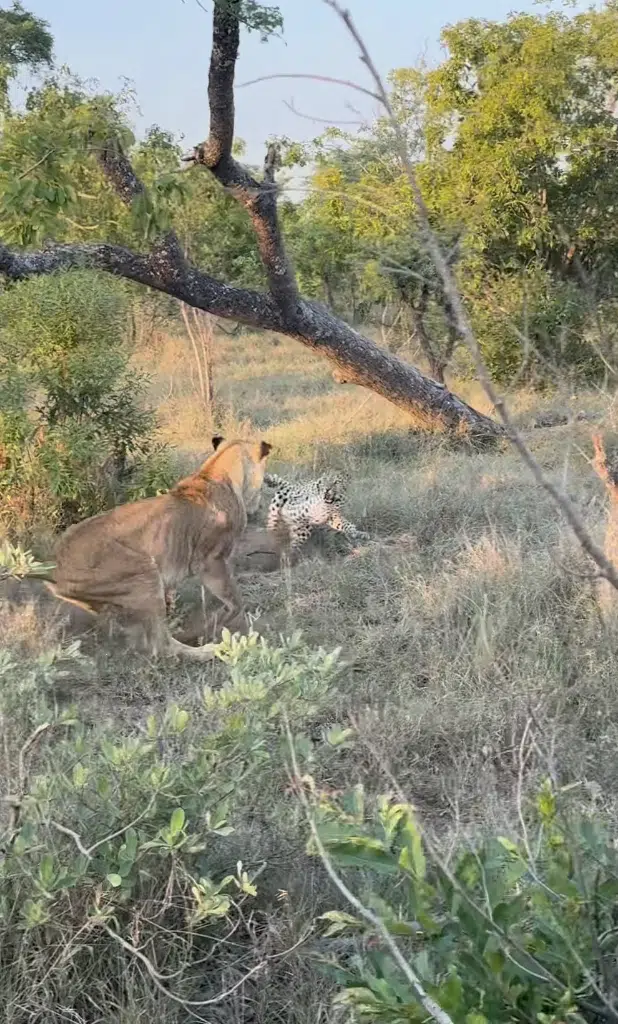On average, leopards sleep eighteen hours a day, choosing to rest by day and hunt at night, using their nocturnal vision and stealthy demeanour to capture prey with relative ease.
While attacks on leopards are rare, they are not entirely immune. Avoiding the sweltering South African heat, somewhere in Limpopo, a leopard was dozing off before two Ximungwe lionesses interrupted the siesta.
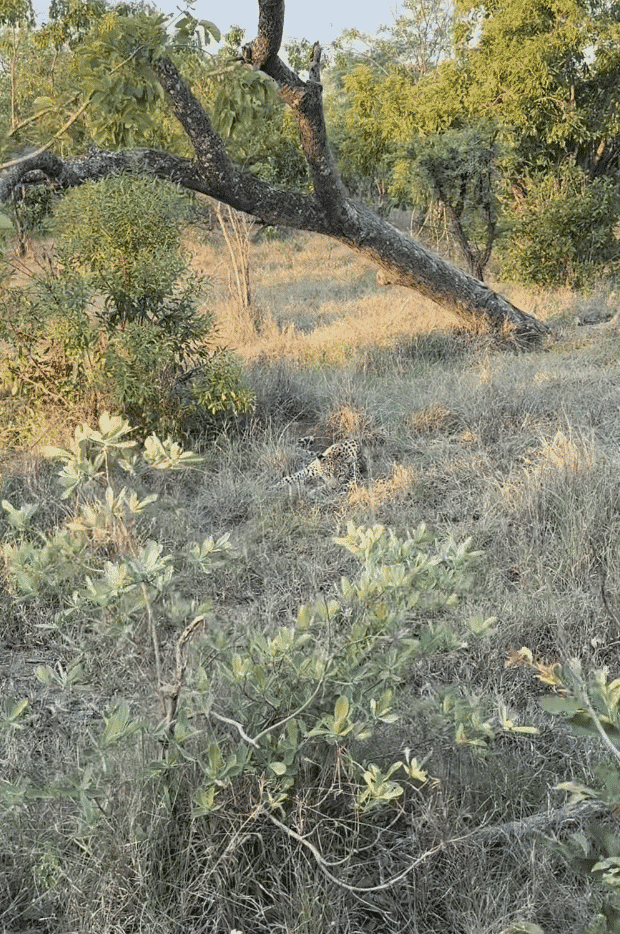
With one lioness running towards and another trailing behind, the leopard quickly rose and darted off into the distance. There, it effortlessly scaled up a tree to find solitude once again.
Watch This Remarkable Event Here:
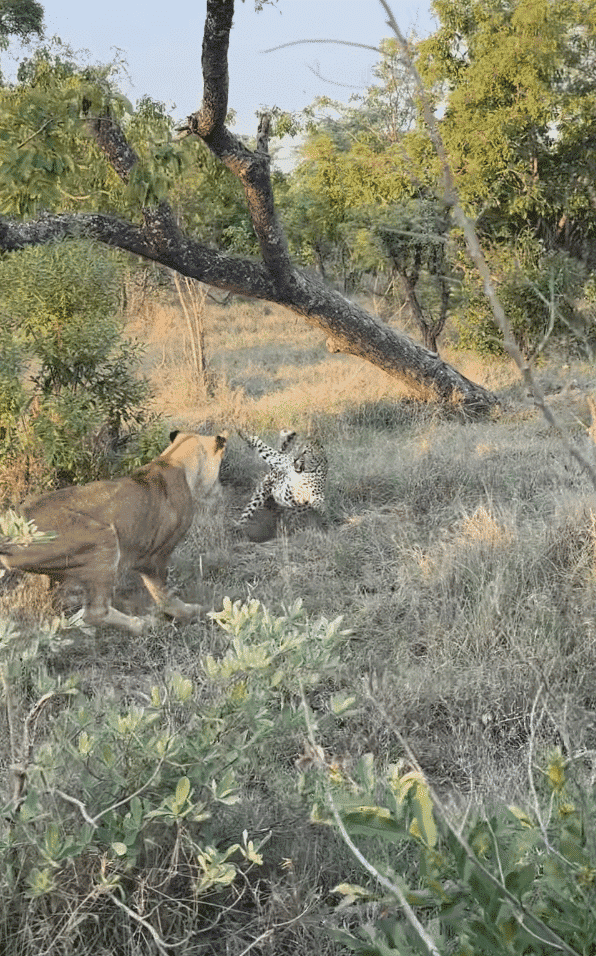
To access the video, click here.
Characteristics of Leopards:
Leopards, with their distinctive golden coat adorned with dark rosettes and unmatched stealth, are among the most fascinating big cats in the animal kingdom. Roaming across a diverse range of habitats, from the dense forests of India to the savannas of Africa, these elusive creatures have adapted to a life of both solitude and predation.
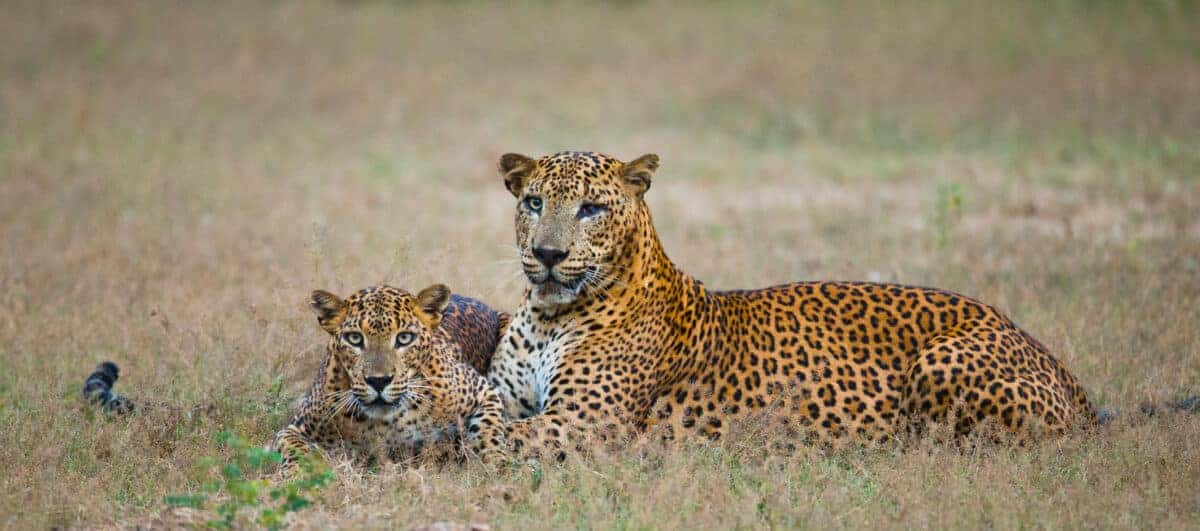
Scientifically known as Panthera pardus, they exhibit a remarkable range in terms of their habitat. They are highly adaptable and can be found in a variety of environments, including grasslands, mountains, and rainforests. This adaptability has enabled them to establish territories in regions as diverse as Southeast Asia, the Middle East, and sub-Saharan Africa. Their ability to thrive in such varied landscapes has contributed to their classification as one of the most widely distributed big cat species.
In terms of size, leopards are medium-sized big cats, with males generally being larger than females. Adult males typically weigh between 80 to 200 pounds, while females weigh between 60 to 130 pounds. Their sleek and muscular build, combined with a distinctive coat pattern, makes them not only agile hunters but also incredibly adept at blending into their surroundings.
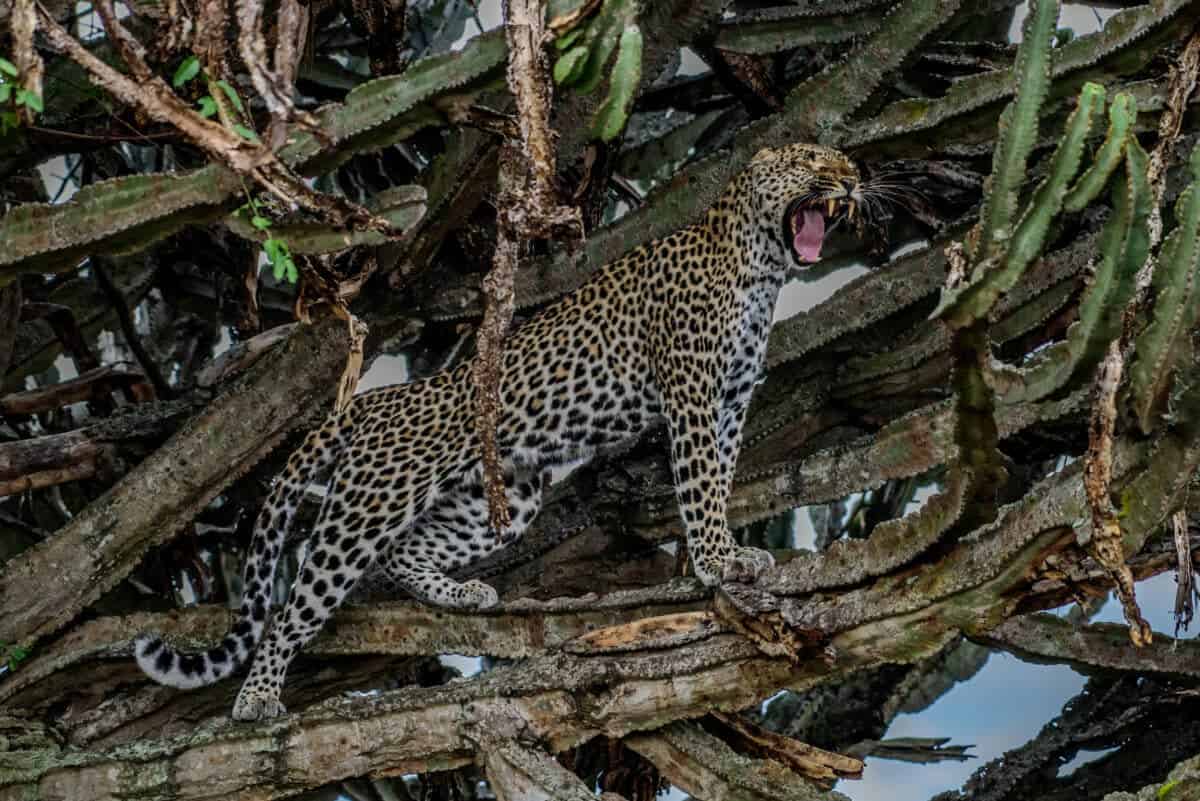
The average lifespan of a leopard in the wild ranges from 12 to 15 years. However, various factors such as habitat, availability of prey, and threats from other predators or human activities can influence their life expectancy. These solitary creatures are known for their elusive behavior, often preferring to roam and hunt alone rather than in groups.
Leopards are carnivorous predators with a diverse diet that includes ungulates, rodents, birds, and even primates. Their hunting strategy is marked by patience and precision, often relying on stealth to get as close as possible to their prey before launching a sudden and powerful attack. This adaptability in their diet has contributed to their widespread distribution, allowing them to thrive in a variety of ecosystems.
Despite their prowess as hunters, leopards face threats from larger predators, such as lions and hyenas, who may compete with them for food or even kill leopard cubs. Additionally, human activities, including habitat loss, poaching, and conflicts with livestock, pose significant challenges to their survival.
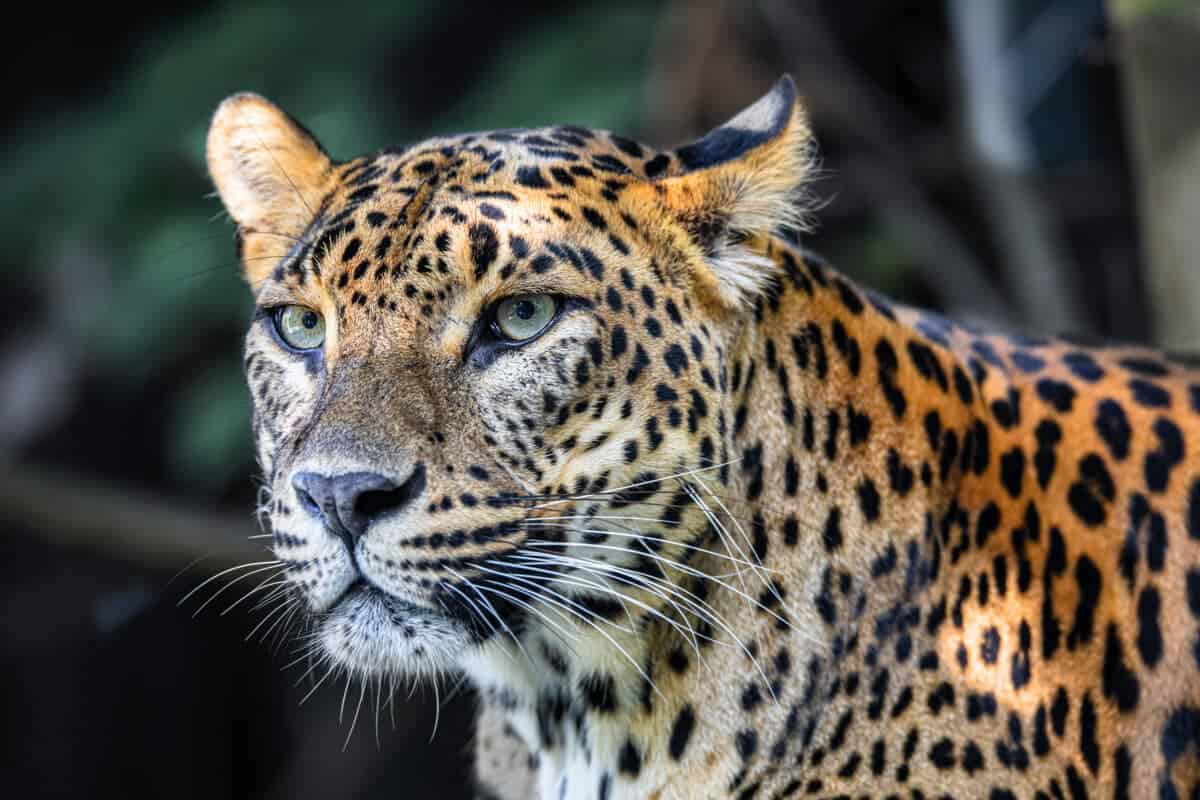
From the dense jungles of Asia to the vast African savannas, these elusive cats navigate a world of constant challenges. As we strive to conserve their habitats and protect them from threats, we unravel more about the mysterious life of leopards, ensuring their place as majestic and awe-inspiring icons of the wild persists for generations to come.
- Meet Frankenkitten, The Cat with Four Ears and One Eye - April 26, 2024
- Watch 100,000 Live Salmon Escape After Truck Crashes in Oregon - April 25, 2024
- Viral Sensation: Puppy in Florida Born with Green Fur - April 25, 2024

